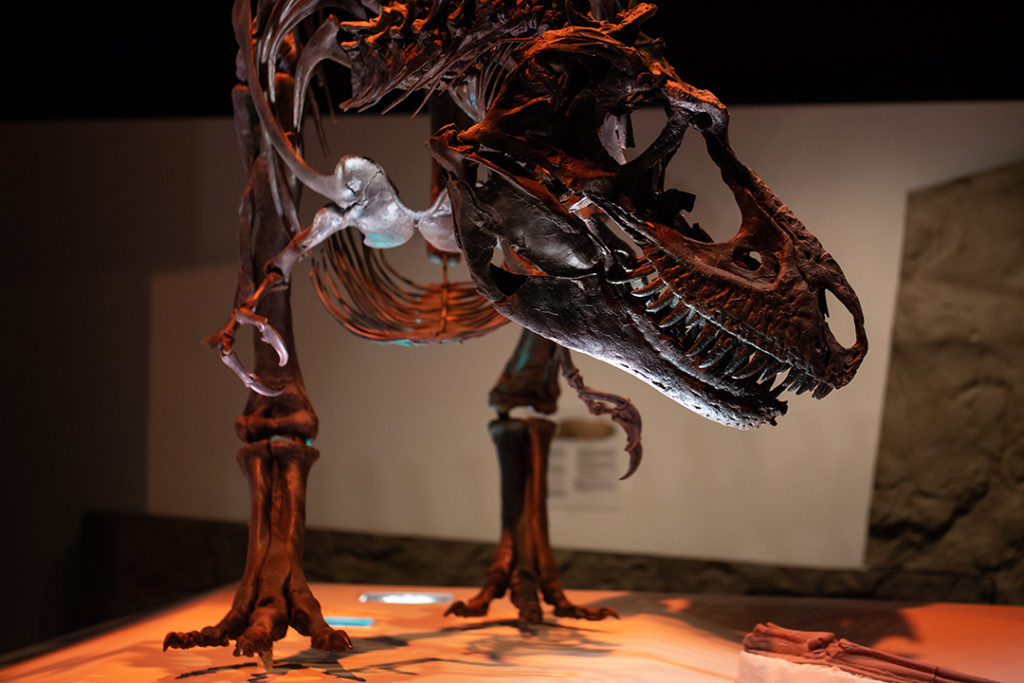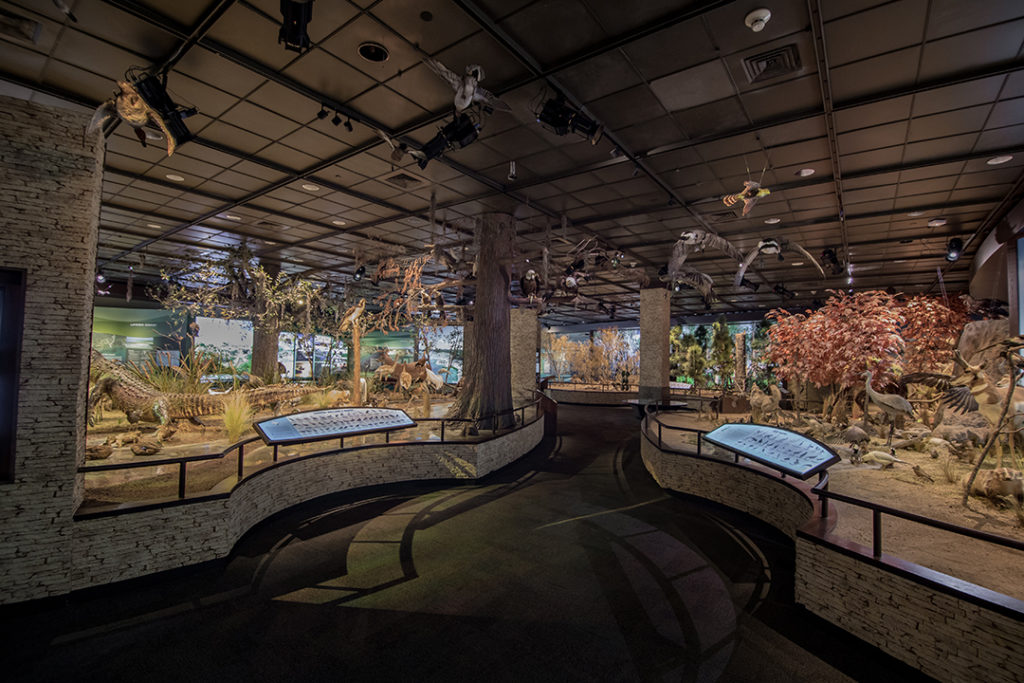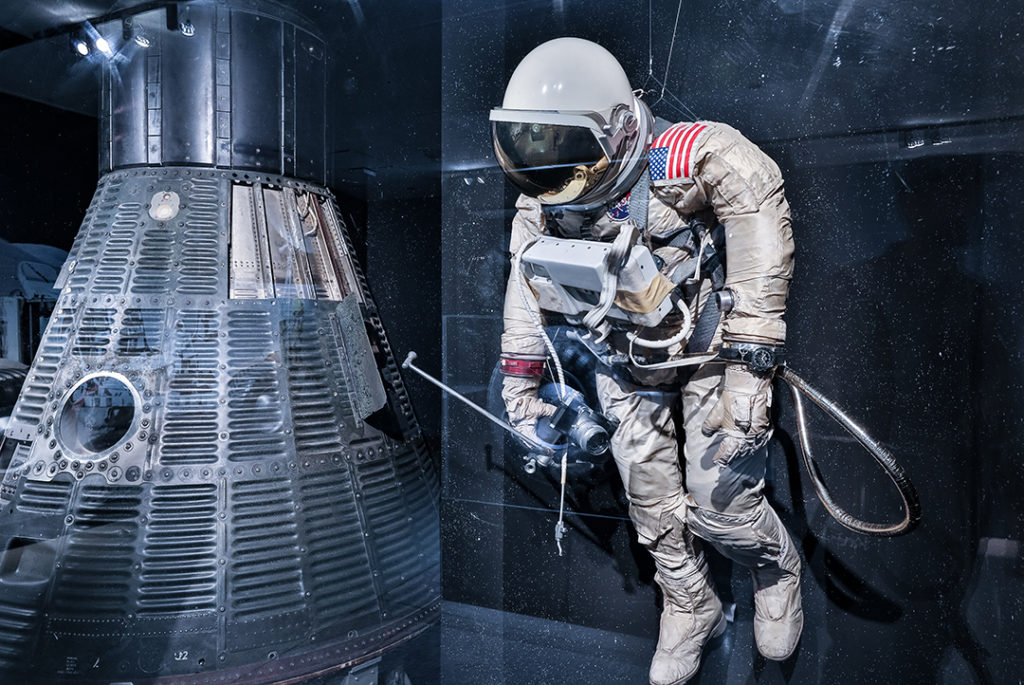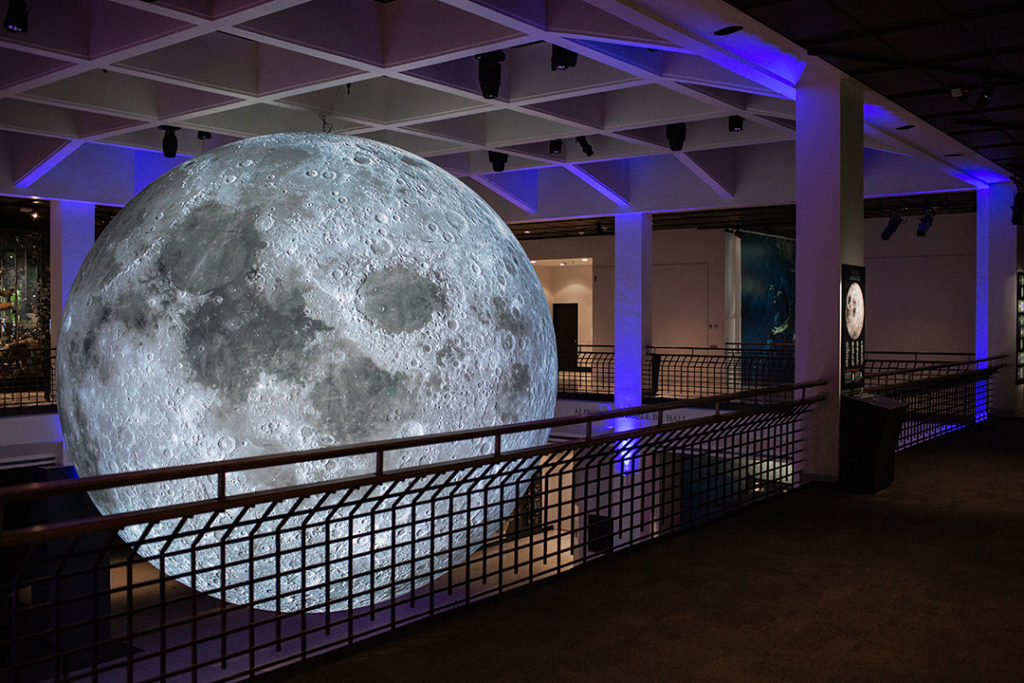As the holidays draw near, the halls of HMNS bring us Christmas cheer! We may not have a partridge in a pear tree, but with five floors of exhibit halls, the museum offers more than just 12 ways to make your winter break merry and bright. Try to count down the 12 Days of HMNS when you visit us this holiday season.
12 Painted Columns
in the Hall of Ancient Egypt
The colorful columns that line the first chamber of the Hall of Ancient Egypt represent the vibrancy of ancient Egypt, a culture that used dyes and pigments to color its world. As you venture further into the hall, the columns fade to reflect the age and wear of the artifacts surrounding them.

11 Egg Cases
in the George W. Strake Hall of Malacology
Some mollusks lay aggregations of eggs, called egg cases, to protect their delicate babies. While enclosed in the case, the young begin to form a thin shell before they hatch. Eleven examples are displayed in our newly renovated Hall of Malacology.
10 Theropod Fossils
in the Morian Hall of Paleontology
Theropods are a group of carnivorous dinosaurs—including guest favorites like T. rex and velociraptor. The Morian Hall of Paleontology has 10 specimens in this suborder of bipedal beasts.

9 Inuit Toys
in the McGovern Hall of the Americas
Aboriginal peoples of the North American Atlantic, the Inuit, fashioned wooden toys from rare driftwood. These miniature objects became more than just playthings, they often double as educational tools. Young girls and boys could practice various life skills with their toys and later learn to build objects to adult scale.
8 Model Microorganisms
in Wiess Energy Hall
These microorganisms lived in the oceans millions of years ago. Because different creatures lived in different times and environments, geologists study them to determine the age of rock and the conditions of its formation.
7 Biomes
in the Farish Hall of Texas Wildlife
Texas covers a large geographic area, and landscapes across the state range widely, showcasing Texas’ biological diversity. Our wildlife dioramas in the Farish Hall of Texas Wildlife cover seven Texan biomes: coastal prairie, coastal oak motte, Rio Grande dry forest, coastal wetland/marsh, high plains, piney woods and Guadalupe mountains.

6 Gold Specimens
in the Cullen Hall of Gems & Minerals
Everything glistens in the Cullen Hall of Gems & Minerals, but the hall boasts six specimens of gold, including a piece shaped like a dragon.
5 Human mummies
in the Hall of Ancient Egypt
Two mummified heads in the Hall of Ancient Egypt are accompanied by three full-body mummies: Neshkans, a priest who tended to the statues of the gods, a Roman admirer of the mummification process known as “The General” and Ankh Hap, whose remains tell the story of Victorian era mummy unwrapping parties.
4 Spacesuits
in the Arnold Space Hall
A pair of spacesuits from the Mercury capsule and two from the Apollo era document two important times in American space travel.

3 Fabergé Tiaras
in the Artie and Dorothy McFerrin Foundation
Crafted by the legendary house of Fabergé, these tiaras were worn by duchesses, princesses and empresses. Empress Josephine (the ex-wife of Napoleon) owned one of them. The newest addition to the gallery was a wedding present for Princess Alexandra of Hanover and Cumberland. The Westminster tiara graced the head of the Duchess of its namesake Westminster, Constance Cornwallis-West.
2 Record-breaking Shells
in the George W. Strake Hall of Malacology
If having one record-breaking shell wasn’t enough, the new renovation of George W. Strake Hall of Malacology added another! Our Australian trumpet snail shell is the largest mollusk shell on display, while the all-white shell of the same species is the largest albino shell in the world.
1 Full Moon
in the Alfred C. Glassell, Jr. Hall
Moon by Luke Jerram is a sculpture that projects 120 dpi detailed NASA imagery of the Moon onto the sculpture’s 23-foot diameter surface. The effect is an installation that looks like we plucked the Moon from the sky and set it right in the center of the museum. It’s on display through Earth Day 2020, so be sure to stop by and see the “Moon” before it sets.

Count down the 12 Days of HMNS during your next visit this holiday season. Can you find them in the museum? Find all of our holiday happenings here.

